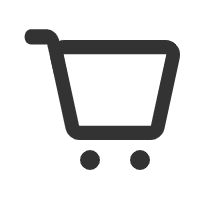market@neoway.com
 Pre-sales Consulting
Pre-sales Consulting Technical Support
Technical SupportIn order to expand their business and create a personal shopping experience for their customers, insurers are constantly exploring new ways to engage and interact with customers. In the current context, IoT devices have developed by leaps and bounds, and at the same time, IoT devices have gradually become mainstream in home facilities and family life. These phenomena may give some inspiration to insurance companies.
According to relevant data, insurance companies can interact with customers 7 to 10 times a day by using smart home devices. Most of these interactions are customer-initiated. In addition, surveys show that for most insurers who interact with customers through smart IoT devices, their Net Promoter Score (NPS, a measure of a customer recommending a company or product to others) is typically over 50.
By combining an IoT approach, whether it is a large property insurance company or a small business, they can help users avoid property risks, while making it easy for customers to adapt to home and work life, ultimately reshaping the way property is protected and insured.
Generally speaking, insurance companies use IoT technology to monitor water leakage, fire, theft, etc., but in the field of property insurance, the role of IoT devices is much more than that. For property insurance companies, they can use a variety of IoT technologies to enhance interaction with users and increase user loyalty, thereby promoting product sales.
The main purpose of property insurance companies adopting IoT devices is to improve performance and boost product sales. For consumers, however, these are not their concerns. Many foreign insurance companies have launched "flood prevention" and other themed activities, aiming to popularize relevant knowledge for customers and increase their vigilance against various disasters such as floods.
However, customers don't seem to buy it. According to statistics, insurance companies that launch the theme of "prevention of water hazards" receive little attention from consumers. Even if insurance companies provide equipment such as water sensors for free, the installation rate of users is very low.
So for property insurers, what IoT devices types should they first adopt to increase user interest and engagement? For users, they pay more attention to the technologies that are actually related to their own interests, and they do not pay much attention to the probabilistic events such as floods. Therefore, one entry point for insurers to adopt IoT devices is to leverage technology and information related to home coverage and security to resonate with consumers and provide them with a peace of mind experience and service to reap the benefits.
In the early days of adopting these devices, the benefits to insurers are difficult to quantify, or even small. However, customers rate these devices highly.
These behaviors of users will not avoid losses or reduce claims for insurance companies, however, these technologies can greatly increase users' installation rates, increase their loyalty to insurance companies, and increase insurance companies' Net Promoter Scores, and can create opportunities for cross-selling or other services.
While enhancing user loyalty by offering user-centric technology, insurers can also introduce devices that reduce financial losses. Relevant data shows that in terms of flood damage alone, every 50,000 home insurance policies generate approximately $10 million in claims per year, and by purchasing $85 worth of smart monitoring components and programs for customers, insurers can almost cut related claims in half.
Another example is that insurance companies can use IoT devices to know exactly the status of a user's home and avoid claims. For agents, who may know that a particular policyholder's home is located where burglaries are frequent, but have no way of knowing the status of the user's home, the equipment and technology allow operators to know whether a user's doors, windows and garage doors are It will be opened on a regular basis to remind users in time to avoid theft of user's property, and at the same time reduce the insurance company's claim losses.